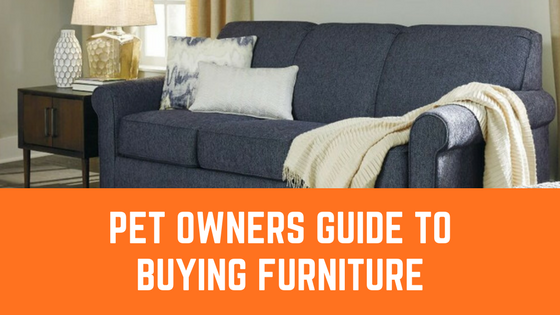
Animals are very influential in decision making, since a lot of us own them and care for them. When you're looking for furniture, sofas in particular, there are certain fabrics to avoid to spare yourself some pretty tedious repair. Depending on the type of dog you have the fur might be too much for the couch. Or worse, your animal likes to scratch and claw and destroy your new couch. Couches, chairs, sofa beds, coffee tables are all items to consider when living with a pet. Regardless of the type of animal you own, or the type of home you live in, there are a few fabrics that pet owners must consider when buying furniture.
Velvet
Here's a fun one. One of the most luxurious, delicate fabrics: velvet. Velvet is a pampering texture, and that's why pampered pets typically want to snuggle up onto it. However, velvet isn't so durable. If it was just the shedding, it wouldn't really be a problem; it's pretty simple to wipe up any hair with a rolling lint brush. But stains or rough play on it will leave you with permanent damage. Staining on velvet is near impossible to clean. Think about it; using water to spot treat would spread like a watercolour painting.
Chenille
Chenille is a fabric that’s a big no-no for pet owners furniture shopping. It's made up of small fuzzy loops that hide dirt really well. Those same little loops can actually be destroyed by pet nails - especially kitten's. Once the nubby loops are pulled a little bit, sorry, pal; that can't really be fixed. You can trim your pet's nails and file them down, but that only prevents so much. So, chenille is a che-no.
Silk
Silk is a beauty but a big no-no. It's stainable, tearable, difficult to clean, expensive; please, for the love of animals, don't buy silk-covered anything unless you use it in a room where pets are strictly prohibited. We want your couches looking and staying nice, just as much as you do. Silk looks fabulous, but not when it's been destroyed. Your living room has other amazing furniture types to consider besides silk.
Tweed
Onto the next fabric; tweed. As classy as it looks, tweed makes it nearly impossible to remove pet hair and fur. It can also be pulled at like chenille can, so as a general rule, it's best to keep your sofa and chair fabrics to a really tight weave selection, since that not only masks dirt and hair, but it also makes your fabrics less susceptible to pulling.
Fabrics to Consider
Some examples of thumbs-up fabrics to consider would be leather (you can vacuum it up easily), denim (rugged and tough; there's a reason blue jeans have such a good rap), canvas (thick and fairly simple to clean), microfiber, and some darker colors. So whether that's in the form of furniture slipcovers or the actual body of the furniture itself, stick to those options, or similar ones.
Cats and Claws
We've talked through fabrics to avoid and fabrics to stick to. Now we explore the wonderful world of claws. Is your cat scratching up the furniture, or are you scared that your kitten will get some bad ideas and start a habit you can't stop? Pets destroying new furniture is a shoppers worst nightmare. We recommend training your animal for this or hiring someone who is able to. Trust us, clawed up furniture is our worst nightmare, too!
Place some cat-friendly scratching posts up throughout your home. Cats scratch items to stretch their tired legs, to mark their personal territory, and to maintain their claw health. So if you can’t teach your cat to stop scratching, it's more beneficial to move their habit to something less destructive. If you need to, tuck sheets around the scratched couch legs tightly. If they're tucked in flush with the edges, it makes it harder for feline to attack. You can also try and use double sided tape or aluminum foil on the areas being scratched. If you spray the couch with a citrus-scented spray, that's a deterrent to felines, so try it out. Just be sure the spray doesn't stain the fabric first. While you're set out to protect your furniture, direct the cat to a scratching post to retrain it. All of these tips and more can help save your furniture for years to come!

